CHAPTER III
THE LEVEL AND PLUMB-RULE
Extract: An Interpretation of Our Masonic Symbols
By J.S.M Ward
London, A Lewis, 1948

These emblems are associated with the Junior and Senior Wardens respectively, and we shall see that whether we regard them solely from the Operative standpoint, or probe deeper into their inner significance, we find that they are most appropriately emblematical of the functions of these officers.
In mediæval days the Wardens were superior foremen, and their duty, as Wardens, was to check and test the work of men employed in building the church.
The Master’s duty was to prepare the plans, as did H.A.B., and though no doubt from time to time he inspected the work, in the ordinary course of things he relied on his Wardens, who with plumb and level tested the walls and pillars as they rose from the ground, to see if they were true.
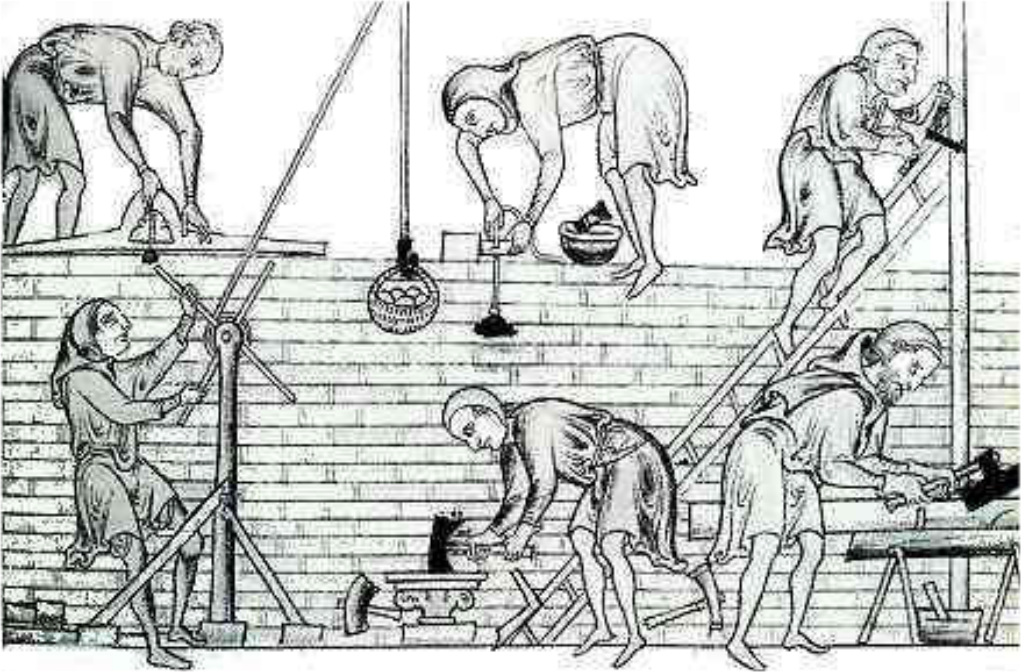
Applying this idea to a modern speculative Lodge we may say that, while it is the duty of the Master to outline the work of the Lodge during his year of office, and decide when he shall initiate, pass, or raise men, it is the duty of the Wardens to supervise details.
Similarly, each man may consider that while it is the Divine Spark within him which calls forth his initial effort to improve himself spiritually, his soul and body must co-operate in order to make that aspiration a reality.
But when we turn to consider the inner meaning of these emblems, we shall find certain features which perhaps we had hardly thought existed. In other works, e.g., the series dealing with the meaning of the three degrees, I have pointed out that the Master represents; (a) God the Creator; (b) the Spirit in Man; the S.W. represents (a) the Destructive or Transformative of the Deity, Shiva, and (b) the soul in man; while the J.W. represents (a) the Preserver, Vishnu, and (b) the body in man.
The functions of these officers and their duties confirm this view.
For example, it was the J.W. or third Grand Master at the building of K.S. temple who died, in man it is the body that dies, whilst among the Hindus it is Vishnu the Preserver who is slain.
In a modern Lodge we are told that it is the J.W. who should see to the bodily needs of the brethren.
It is he who calls them from labour to refreshment, and at the installation he is specifically told that it is his duty to supervise the dinner after labour.
But the same dual character is also depicted in their emblems, for the plumb-rule is synonymous with the triangle whose point is downwards, while the level is a triangle with the point upwards.
The straight perpendicular line is the caste mark of Vishnu and the triangle is His emblem.

Vishnu By Gita Press Gorakhpur
IMAGE LINKED: wikimedia Attribution 4.0 International (CC BY 4.0)

The Triangle of Water
This is the triangle of water and at once reminds us of the J.W.’s, P.W., or the P.W. leading to the second degree.
It symbolises the rain which falls from heaven, without which there would be no corn to feed men.
Without rain life could not be preserved on earth. It is therefore peculiarly appropriate as the emblem of the J.W., who represents God the Preserver, ever willing to sacrifice Himself to save and preserve mankind.
But the J.W. also represents the physical body, which needs bread and water to preserve it. Nor must we forget that Vishnu is Lord of the South and represents the sun at noon.
The S.W., however, represents Shiva, Lord of the West, the Ender of Life; He who shall close the Lodge of the World which He shall one day whelm with fire.
His caste mark consists of level horizontal lines and the triangle of fire (point upwards), which a represents the flames which leap upwards towards the sky when the dead are burned in His honour.
His is the C.T. of death, but the moon is also His emblem and He is usually depicted with it on His head, just as our S.W.is associated with the moon.
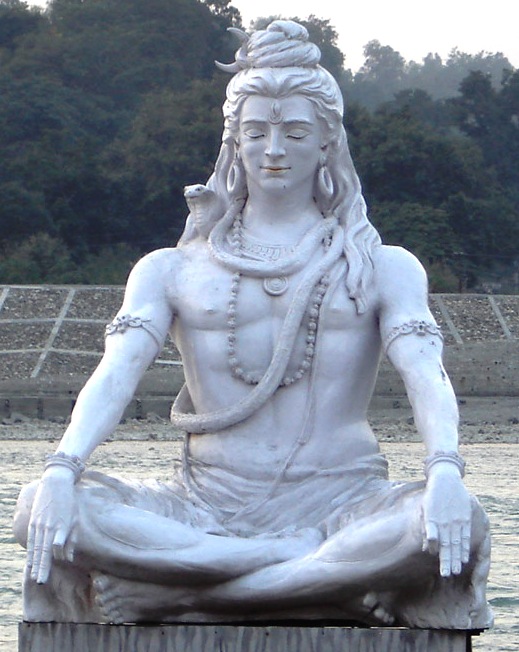
Shiva By Iqbal Mohammed
IMAGE LINKED: wikimedia Attribution 4.0 International (CC BY 4.0)
The P.W. leading to the third degree may rightly be called the S.W.’s P.W. and is obviously associated with the use of fire.
The emblems of water and fire play their part in the final tragedy, but it is the spirit armed with the emblems of man’s animal passions which completes the dread work.
Yes, it is the animal passions in their crudest form, not the gavel, which bring about the final catastrophe.
In this chapter I have been obliged to write less frankly than in the first two, because I am dealing with some of the most precious secrets in Freemasonry, but I trust that my readers will be able to follow me.
To summarise the meaning of these symbols, let me say that the plumb-rule is but the triangle of water slightly disguised.
It symbolises God the Preserver, whether we call Him Vishnu, Quetzalcoatl (in Mexico), or Christ.
It is most appropriately applied to the J.W., who symbolises this aspect of God and also the body in man.
For the J.W.’s work of looking after the bodily needs of the members of the Lodge would soon cease if it were not for the water which comes from heaven and enables the earth to bring forth plenty to sustain and preserve life on this planet.

The Triangle of Fire
The level not only reminds us of Shiva, the Great Leveller, whose caste mark consists of horizontal lines, but also His triangle of fire.
Fire is His element with which He shall one day destroy the earth, just as the S.W. closes the Lodge.
The S.W.’s P.W. carries with it a hidden reference to fire, and that officer’s association with the moon is paralleled by the fact that the moon is the emblem of Shiva.
Just as the three tau crosses of the W.M. become united in the jewel of the R.A., so the two triangles of the Wardens are likewise united.
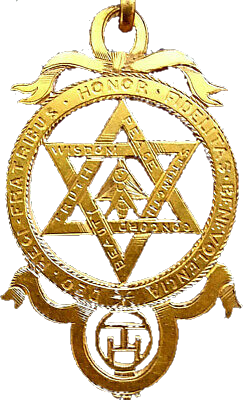
Holy Royal Arch Chapter Breast Jewel
IMAGE LINKED: wikimedia Attribution 4.0 International (CC BY 4.0)
On studying that jewel we find that these two triangles are placed within the circle of the Infinite, and have at the centre a point.
The whole emblem is the symbol of Trimurti, the Three in One of the Hindus, and just as the united taus symbolise something far more exalted than the three separate taus, so the double triangle surrounded by the circle implies the complete unity and absorption of the Preservative and Destructive sides of the Deity into the Creative, to form the All Embracing.
There is still deeper meaning in this jewel which cannot be discussed in this chapter, but sufficient has been said to show that the two triangles of the Wardens are carried forward into the R.A., their inner meaning being exalted in the process.

Triple Tau
These triangles also play their part in our aprons, and will be considered in the chapter which deals with that subject.
All we will say about them now is that there, too, they symbolise water and fire, but they also symbolise something deeper, a deeper meaning which does not attach to them in the humbler form of the plumb-rule and level.
Did you know ?
The plumb in plumb bob derives from Latin plumbum (‘lead’), the material once used for the weighted bob at the end. The adjective plumb developed by extension, as did the noun aplomb, from the notion of “standing upright.”
Source: https://www.wikiwand.com/en/Plumb_bob
Article by: J. S. M. Ward
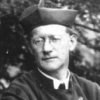
John Sebastian Marlow Ward (22 December 1885 – 1949) was an English author who published widely on the subject of Freemasonry and esotericism.
He was born in what is now Belize. In 1908 he graduated from the University of Cambridge with honours in history, following in the footsteps of his father, Herbert Ward who had also studied in history before entering the priesthood in the Anglican Church, as his father had done before him.
John Ward became a prolific and sometimes controversial writer on a wide variety of topics. He made contributions to the history of Freemasonry and other secret societies.
He was also a psychic medium or spiritualist, a prominent churchman and is still seen by some as a mystic and modern-day prophet.
Recent Articles: Masonic Miscellanies
 Masonic Miscellanies - The Amulet of the Ladder Explore the cosmic significance of the Ladder in ancient Egyptian mythology through Wallis Budge's "Egyptian Magic." Discover how this profound symbol bridges the mortal and divine, encapsulating the Egyptians' fervent afterlife aspirations with a blend of myth, magic, and material culture. Dive into the celestial ascent of Osiris and mortal souls. |
 Masonic Miscellanies - Adulterine Gilds Guilds, the associations that shaped medieval European society, were more than just organizations of artisans and merchants. They played a vital role in the economic and social development of towns and cities. This exploration delves into the intriguing concept of adulterine gilds and their interconnectedness with guilds, offering insight into the significance of legal authorization and recognition in medieval Europe. |
 Masonic Miscellanies - Masonic Orb Discover the fascinating world of Masonic ball watch fobs, intricately crafted with tiny pyramids that form a cross when opened. These decorative accessories were all the rage in the late 1800s and early 1900s, and they still hold a certain allure today. Explore the different varieties and symbols found on these unique pieces that carry deep Masonic meaning. |
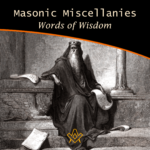 Masonic Miscellanies – Words of Wisdom Uncover timeless wisdom from King Solomon to Albert Pike in our latest Masonic Miscellanies, a treasure trove of insights for Masons. Journey through the ages and glean inspiring sayings, reflecting on their profound influence on Masonic principles. An enriching read for the enlightened. |
 Masonic Miscellanies - Symbolism of the Right Hand Unlock the enigmatic realm of Freemasonry as we delve into its age-old symbols, rituals, and philosophies. This thought-provoking exploration, drawn from Mackey's Revised Encyclopedia of Freemasonry, focuses on the iconic 'right hand' symbol - its rich history, universality, and profound significance. |
 Masonic Miscellanies - Order of the Secret Monitor Unveil the mystery of Freemasonry with 'The Order of the Secret Monitor'. Discover this lesser-known appendant order, its unique rituals, and the profound teachings it offers. Explore the bonds of friendship and brotherhood it fosters, all wrapped in an intriguing cloak of mystery. Your journey into the depths of Masonic wisdom begins here. |
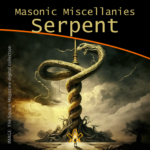 Masonic Miscellanies - The Symbol of the Serpent As a symbol, the serpent obtained a prominent place in all the ancient initiations and religions. |
 Masonic Miscellanies - The Four Veils in Royal Arch Masonry What are the four veils in Royal Arch Masonry? And what is the 'Ceremony of Passing the Veils'? Although common throughout Scotland, Ireland and the United States, it is mostly unknown in England, presently only worked in the Province of Bristol. ( and by dispensation ) |
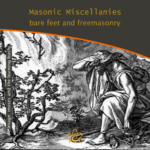 Masonic Miscellanies - Bare feet and Freemasonry A candidate for initiation into a Masonic Lodge often finds the requirements which he/she must fulfil somewhat odd. The mode of preparation often remains a puzzle, since the ritualistic explanation is not offered in full. Why are we 'slipshod' or "bare-footed" in Masonic Ritual? |
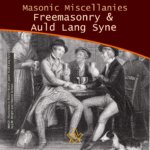 Masonic Miscellanies – Freemasonry and Auld Lang Syne Millions of people throughout the world will sing Auld Lang Syne to see out the Old Year. Few will know all the words, fewer still know what they mean, or that there is a link to Freemasonry. |
 Masonic Miscellanies - The Mosaic Pavement - why mosaic, why pavement? We are all familiar with the black and white chequered flooring of the Masonic lodge but where did it originate? There are a few theories… |
 Masonic Miscellanies – Masonic Master's Carpets Have you got a magic "Masonic Master's Carpet" in your lodge? I say 'magic' with my tongue firmly in my cheek because (as far as I know) these fabulous works of art don't bestow any mystical powers but can bestow some educational ones! However, considering their possible value today, they may magic up some interest (or funds). |
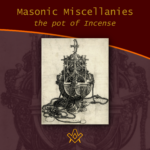 Masonic Miscellanies – The Pot of Incense Just when the pot of incense became an emblem of the third section of the Sublime Degree can not be stated with certainty. It is, apparently, an American invention or addition. But what does it symbolise? |
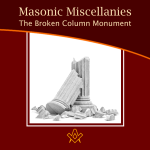 Masonic Miscellanies - The Broken Column Monument The story of the broken column was first illustrated by Amos Doolittle in the "True Masonic Chart" by Jeremy Cross, published in 1819. |
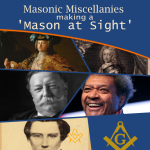 Masonic Miscellanies - Making a 'Mason at Sight' What does it mean to make a 'Mason at sight', and who was made one? |
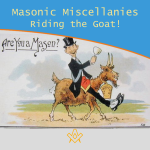 Masonic Miscellanies - Riding the Goat! Many Freemasons will have come across the phrase 'riding the goat', and will no doubt have been the butt of a joke about it (sorry, I couldn't resist!) But what does it mean and where did the phrase come from? |
 Masonic Miscellanies - What are the 'three dots'? Three dots or points in an upright triangular shape ∴ is most commonly known as the 'therefore' sign – so why is it used in Freemasonry? |
 Masonic Miscellanies - Keep Within Compass This month we discover a series of allegorical prints warning us to "Keep within Compass and you shall be sure, to avoid many troubles which others endure." |
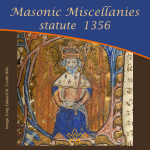 Masonic Miscellanies - statute 1356 Further to the reference in the article – The Builders - 6 - Free-Masons 'a statute was enacted against the Free-masons in 1356' – Regulations for masons who are hewers, on the one hand, and the light masons and setters on the other. |
 Masonic Miscellanies - An Anti-Masonic 'Apron'? The Anti-Masonic 'Apron' was created during the 1832 Presidential election in USA. It was not Ani-masonic. And it was not an apron. Read on to find out what and why it was created. |
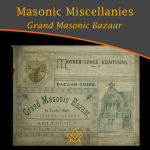 Masonic Miscellanies - Grand Masonic Bazaar (1895) Grand Masonic Bazaar (1895); to raise funds to clear the debt incurred by “Mother Kilwinning” in rebuilding their Lodge. |
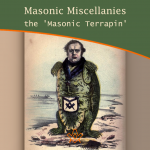 Masonic Miscellanies - the 'Masonic Terrapin' A satirical book from 1851 includes a bizarre caricature of a 'Masonic Terrapin' - all I can say is 'read on'… |
 Masonic Miscellanies - Masonic Bookplates You probably know what a bookplate is for, but did you know that the earliest known book mark/label dates from the reign of Amenhotep III in Egypt around 1391−1353 BCE?! |
 Masonic Miscellanies - Freemasonry & Bees Freemasonry & Bees - what's the buzz? The bee was among the Egyptians the symbol of an obedient people, because, says Horapollo, of all insects, the bee alone had a king. |
 Masonic Miscellanies - The mystery of the Tattooed Freemason In 1894, the body of a drowned man was found in the Bay of San Francisco - what they discovered was amazing. |
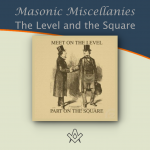 Masonic Miscellanies - The Level and the Square (A Poem) The Level and the Square (A Poem) - "We meet upon the Level, and we part upon the Square – |
 Masonic Miscellanies - The Mystic Tie What is the 'Mystic Tie'? Clue: it's not an item of neckwear! |
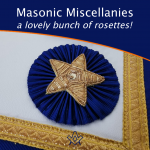 Masonic Miscellanies - A lovely bunch of rosettes! Where did the origin of the use of rosettes on Masonic aprons come from ? |
 Masonic Miscellanies - The Lodge of Sorrow The Lodge of Sorrow - Extracted General Ahiman Rezon, by Daniel Sickles, [1868] |
 Masonic Miscellanies - Memento Mori Memento Mori - a Masonic reminder to make your mark on the world |
 Masonic Miscellanies - A closer look at the Level and the Plumb-rule A closer look at the Level and the Plumb-rule |
 Masonic Miscellanies - The Symbolism of the Gloves The Symbolism of the Gloves and why Freemasons wear white gloves |
 Masonic Miscellanies - Will the real James Anderson please stand up? Will the real James Anderson please stand up? |
 Masonic Miscellanies - The Legend of the Third Degree The most important and significant of the legendary symbols of Freemasonry is, undoubtedly, that which relates to the fate of Hiram Abif. |
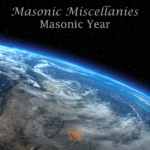 Masonic Miscellanies - Masonic Calendar Why do Freemasons use different 'years' to our regular calendar? |
 Masonic Miscellanies - What is a 'Lewis'? The English word 'Lewis' is a term belonging to operative Masonry, and signifies an iron cramp, which is inserted in a cavity prepared for the purpose in a large stone. |
 Masonic Miscellanies - From J.S.M. Ward Ever wondered why masons had to be 'free' or why we have a Tyler? |
masonic knowledge
to be a better citizen of the world
share the square with two brothers

click image to open email app on mobile device








